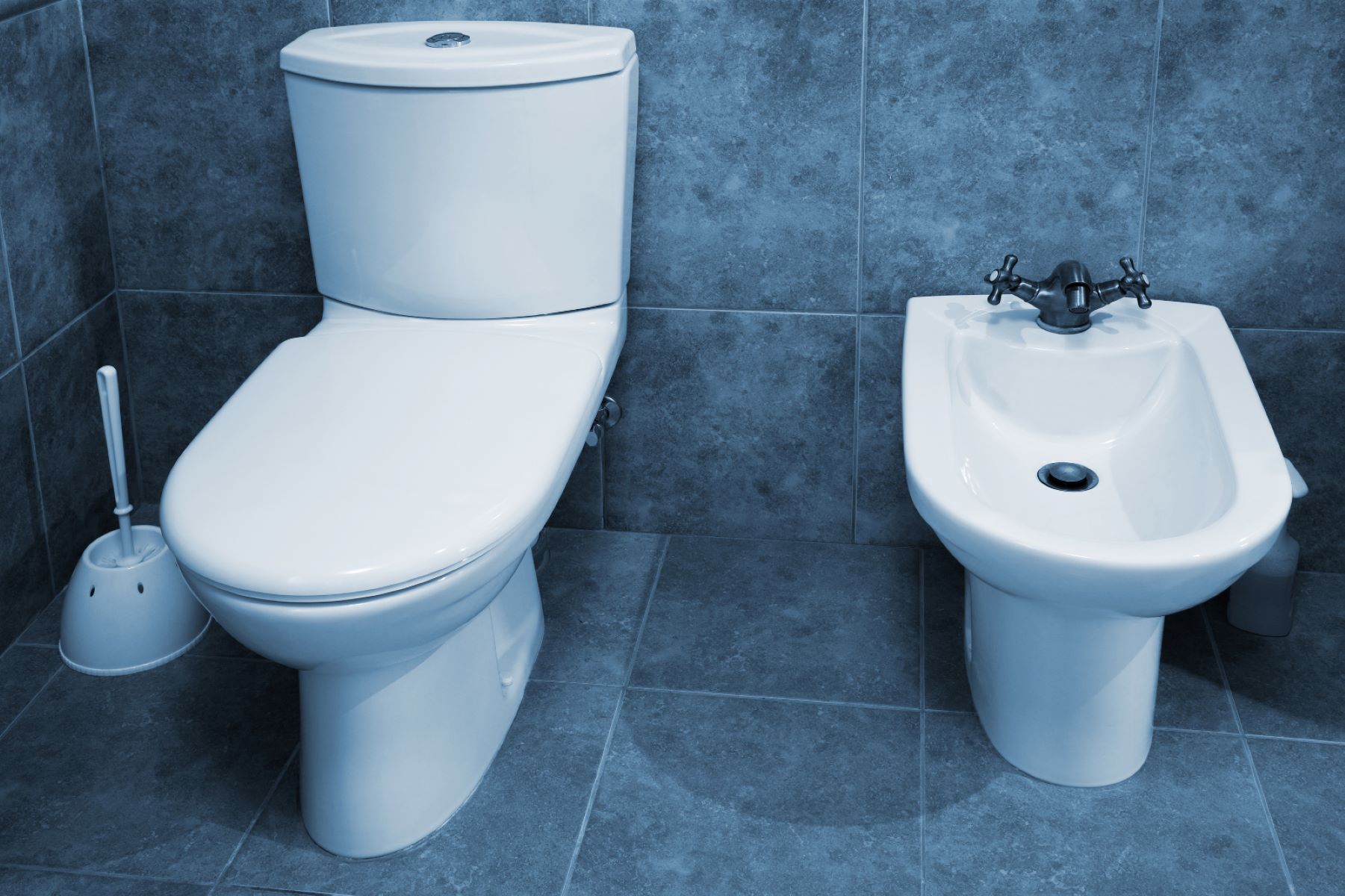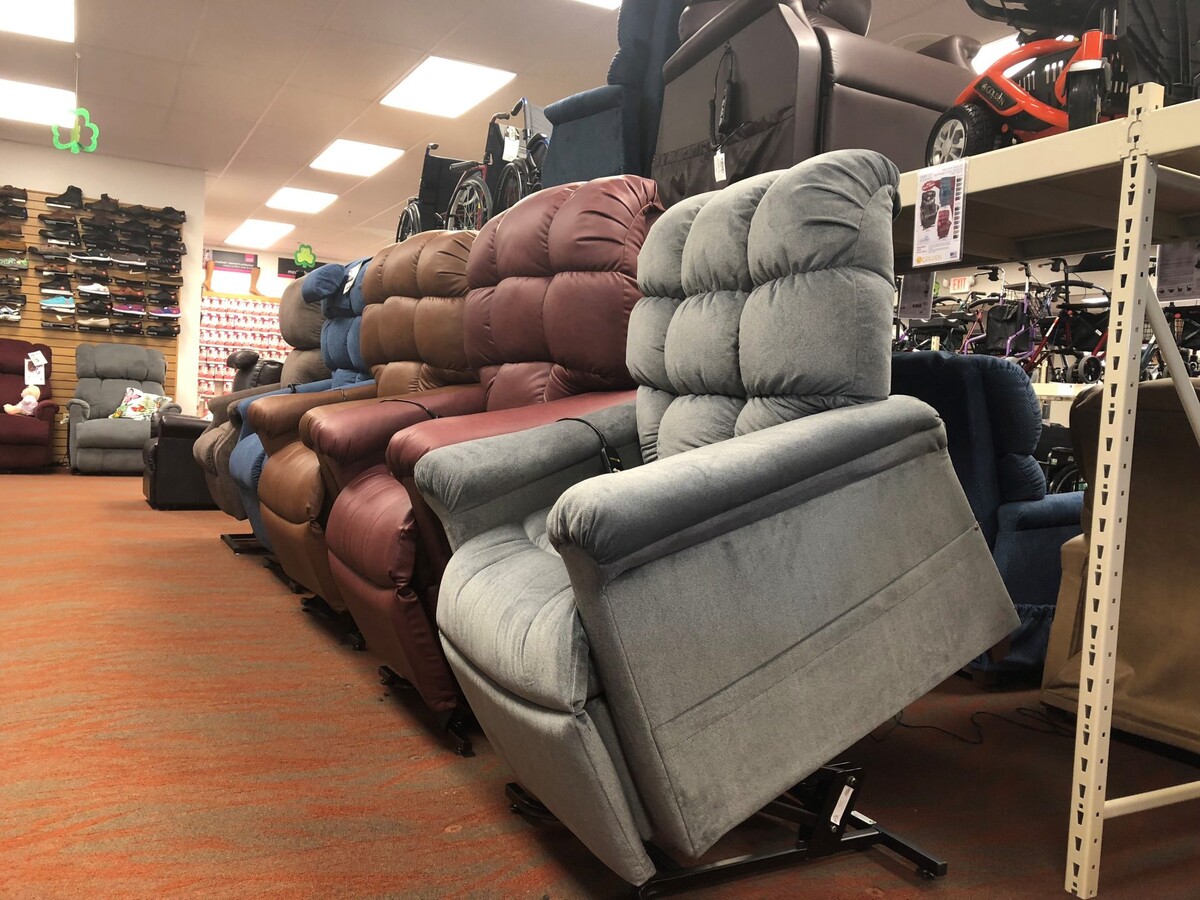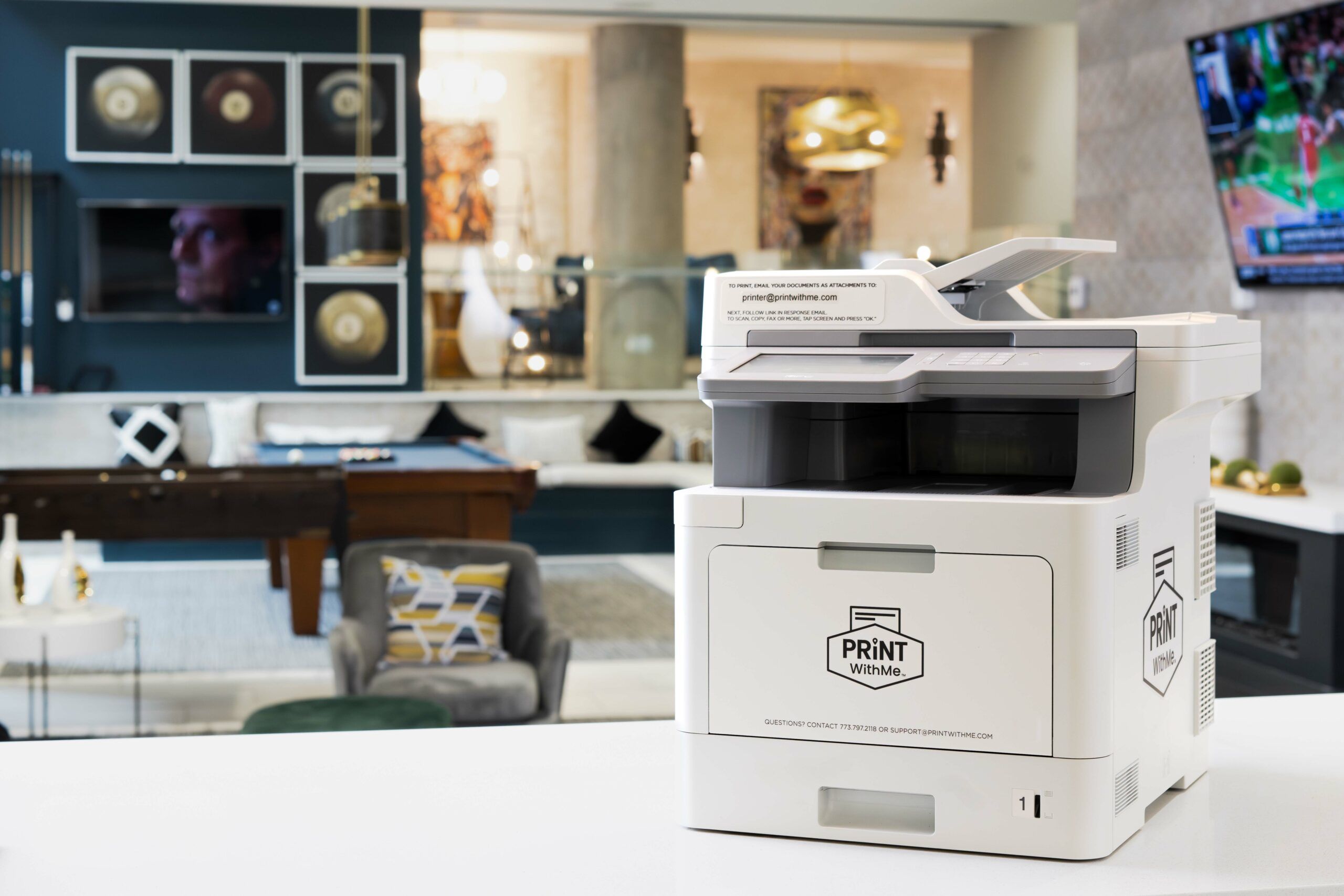Home>Furniture>Bedroom Furniture>How To Choose A Mattress


Bedroom Furniture
How To Choose A Mattress
Modified: August 28, 2024
Looking to buy bedroom furniture? Learn how to choose the perfect mattress for your comfort and support needs. Find the best mattress for a good night's sleep.
(Many of the links in this article redirect to a specific reviewed product. Your purchase of these products through affiliate links helps to generate commission for Storables.com, at no extra cost. Learn more)
Introduction
Choosing the right mattress is crucial for a good night’s sleep and overall well-being. After all, we spend about a third of our lives in bed, and a comfortable mattress can significantly impact the quality of our sleep. With the wide range of options available in the market, it can be overwhelming to decide which mattress is best suited for you.
In this article, we will guide you through the process of choosing a mattress that caters to your specific needs and preferences. We will discuss various factors to consider, such as mattress types, firmness levels, sleeping positions, body weight, preferred sleep temperature, allergies, motion isolation, durability, price range, trial periods, warranty, and customer reviews. By understanding these factors, you will be well-equipped to make an informed decision and select the perfect mattress.
So, let’s dive in and discover how to choose a mattress that will provide the utmost comfort and support for a restful night’s sleep.
Key Takeaways:
- Choose a mattress based on your sleeping position, body weight, and preferred sleep temperature. Consider factors like allergies, motion isolation, and durability to find the perfect fit for a restful night’s sleep.
- Take advantage of trial periods, read customer reviews, and consider warranties when selecting a mattress. Balance your budget with comfort and quality to make an informed decision for a rejuvenating sleep experience.
Read more: How To Choose A Mattress Protector
Factors to Consider
When it comes to choosing a mattress, there are several factors that you should take into consideration to ensure you make the right choice. Let’s explore these factors in more detail:
- Mattress Types: There are various types of mattresses available, including innerspring, memory foam, latex, hybrid, and adjustable beds. Each type has its own unique characteristics and benefits. Innerspring mattresses are known for their excellent support and responsiveness, while memory foam mattresses offer pressure relief and contouring. Latex mattresses are natural and hypoallergenic, making them a great choice for people with allergies. Hybrid mattresses combine different materials to provide a balance of comfort and support, while adjustable beds allow you to customize your sleeping position.
- Firmness Level: The firmness level of a mattress refers to how soft or firm it feels when you lie down. It is a matter of personal preference, and different individuals may have different preferences. Some people prefer a firmer mattress for better support and spinal alignment, while others prefer a softer mattress for a plush and cozy feel. It’s important to consider your sleeping position, body weight, and any specific health conditions when determining the ideal firmness level for you.
- Sleeping Position: Your sleeping position plays a significant role in determining the type of mattress that will provide you with optimal comfort. For example, back sleepers may prefer a medium-firm mattress that supports the natural curve of the spine, while side sleepers may benefit from a softer mattress that cushions the shoulders and hips. Stomach sleepers, on the other hand, may require a firmer mattress to prevent sinking and maintain proper alignment.
- Body Weight: Your body weight can affect the amount of support and cushioning you need from a mattress. Heavier individuals may require a firmer mattress to prevent excessive sinking and provide adequate support, while lighter individuals may find a softer mattress more comfortable. It’s essential to find a mattress that can accommodate your body weight and distribute it evenly to promote proper alignment and pressure relief.
- Preferred Sleep Temperature: Some mattresses tend to retain heat, which can be uncomfortable for individuals who sleep hot. If you are prone to getting warm during the night, consider a mattress with cooling properties, such as gel-infused memory foam or breathable materials like latex or innerspring. These materials allow for better airflow, helping to regulate your body temperature and keep you cool throughout the night.
By considering these factors, you will be able to narrow down your options and find a mattress that best suits your needs and preferences. In the next sections, we will explore additional factors to keep in mind, such as allergies and sensitivities, motion isolation, durability, price range, trial periods, warranty, and customer reviews.
Mattress Types
When shopping for a mattress, it’s essential to familiarize yourself with the different types available, as each type offers unique benefits and features. Let’s explore the most common mattress types:
- Innerspring Mattresses: Innerspring mattresses are constructed with a network of metal coils or springs that provide support and bounce. These mattresses offer excellent airflow, which helps regulate temperature. Innerspring mattresses come in various firmness levels and are a popular choice for those who prefer a traditional and responsive feel.
- Memory Foam Mattresses: Memory foam mattresses are made from a viscoelastic material that contours to the body’s shape and offers exceptional pressure relief. These mattresses are known for their ability to absorb motion, providing undisturbed sleep. Memory foam mattresses come in different densities, with higher density foam offering more support and durability.
- Latex Mattresses: Latex mattresses are made from natural or synthetic latex derived from rubber trees. They offer a buoyant and responsive feel, similar to memory foam but with more bounce. Latex mattresses are known for their breathability, hypoallergenic properties, and durability. Natural latex mattresses are eco-friendly and free from harmful chemicals.
- Hybrid Mattresses: Hybrid mattresses combine the benefits of different mattress types, usually featuring a combination of innerspring coils and foam or latex layers. These mattresses aim to provide the best of both worlds, with the support of innerspring coils and the comfort and pressure relief of foam or latex layers. Hybrid mattresses are ideal for those seeking a balance of support and cushioning.
- Adjustable Beds: Adjustable beds are designed with an adjustable base that allows you to customize the position of your head and legs. Along with an adjustable base, these beds can be paired with different mattress types to cater to individual comfort preferences. Adjustable beds are particularly beneficial for those with medical conditions or who enjoy reading or watching TV in bed.
It’s important to take into account your preferred sleeping position, firmness preference, and specific needs when choosing a mattress type. Each type offers a unique combination of support, comfort, and durability, so consider your personal preferences and requirements to find the perfect match.
In the next sections, we will further explore other factors to consider when choosing a mattress, such as firmness level, sleeping position, body weight, preferred sleep temperature, allergies and sensitivities, motion isolation, durability, price range, trial periods, warranty, and customer reviews.
Firmness Level
The firmness level of a mattress is a crucial factor in determining your comfort and support while you sleep. It refers to how soft or firm the mattress feels when you lie down on it. Finding the right firmness level can greatly impact your sleep quality and overall satisfaction with your mattress.
Generally, mattress firmness levels range from soft to medium to firm. Here’s a breakdown of what to consider for each firmness level:
- Soft: Soft mattresses offer the highest level of plushness and sinkage. They provide a hugging sensation and are ideal for individuals who prefer a cozy, cradling feel. Soft mattresses are suitable for side sleepers as they can help relieve pressure on the shoulders and hips. They are also a good option for lightweight individuals who may not require as much support.
- Medium: Medium firmness is the most common and versatile firmness level. This level of firmness strikes a balance between comfort and support, catering to a wide range of sleepers. Medium-firm mattresses offer enough cushioning to contour to the body’s curves while still providing ample support for proper spinal alignment. They are suitable for back sleepers, combination sleepers, and those who prefer a medium level of comfort.
- Firm: Firm mattresses offer minimal sinkage and provide a more solid and supportive feel. They are best suited for stomach sleepers and individuals who need extra support for their back or spine. Firm mattresses promote proper spinal alignment and prevent excessive sagging. They also tend to have better breathability and can keep you cooler throughout the night.
It’s important to note that personal preference and individual needs play a significant role in determining the right firmness level for you. Factors such as your body weight, sleeping position, and any specific health conditions should be considered when choosing firmness. For example, heavier individuals may require a firmer mattress to prevent excessive sinking, while side sleepers may benefit from a softer mattress for pressure relief.
Keep in mind that some mattresses offer the option to customize the firmness level by adding or removing mattress toppers or adjusting air chambers. This can be beneficial if you are unsure of your ideal firmness or if you share your bed with a partner who has different preferences.
Ultimately, the goal is to find a mattress that provides optimal support and comfort for your unique needs, ensuring a restful and rejuvenating night’s sleep.
In the next sections, we will explore additional factors to consider when choosing a mattress, including sleeping position, body weight, preferred sleep temperature, allergies and sensitivities, motion isolation, durability, price range, trial periods, warranty, and customer reviews.
Sleeping Position
Your sleeping position plays a crucial role in determining the type of mattress that will provide you with optimal comfort and support. Different sleeping positions require different levels of support to ensure proper alignment of the spine and reduce pressure on certain areas of the body. Let’s explore the best mattress choices for each sleeping position:
- Back sleepers: Back sleepers tend to benefit from a medium-firm to firm mattress that provides adequate support to maintain the natural curve of the spine. A mattress that is too soft may cause the lower back to sink too much, leading to discomfort and potential back pain. Look for a mattress that offers enough cushioning to contour to the body’s curves while promoting proper alignment.
- Side sleepers: Side sleepers typically require a mattress with a softer to medium level of firmness to cushion the shoulders and hips. This allows for better pressure relief and proper spinal alignment. A mattress that is too firm may create pressure points, leading to discomfort and potential numbness. Look for a mattress that offers adequate support while also providing enough contouring to alleviate pressure on the side of the body.
- Stomach sleepers: Stomach sleepers generally benefit from a firmer mattress to prevent excessive sinking of the hips and ensure proper spinal alignment. Sleeping on the stomach can strain the neck and lower back, so a supportive mattress is crucial. A mattress that is too soft may cause the body to sink too deeply, resulting in discomfort and potential back pain. Look for a firm mattress that keeps the body level and supports the spine.
- Combination sleepers: Combination sleepers, who regularly switch between different sleeping positions throughout the night, may find a medium firmness mattress to be the most suitable. This allows for a balance of support and comfort, accommodating various sleeping positions and movement during sleep. Look for a mattress that strikes a balance between contouring and responsiveness to cater to your changing sleeping positions.
While these guidelines provide a general idea of the recommended mattress firmness for each sleeping position, it’s important to listen to your body and adjust accordingly. Everyone’s comfort preferences and support needs vary, so it’s crucial to find a mattress that suits your individual needs.
When shopping for a mattress, consider trying different models and taking advantage of sleep trials to ensure that the mattress adequately supports you in your preferred sleeping position. By finding the right mattress for your sleeping position, you can enjoy a more restful and comfortable night’s sleep.
In the next sections, we will explore additional factors to consider when choosing a mattress, including body weight, preferred sleep temperature, allergies and sensitivities, motion isolation, durability, price range, trial periods, warranty, and customer reviews.
Read more: How To Choose A Mattress Topper
Body Weight
Your body weight is an important factor to consider when selecting a mattress. Different body weights have different support and pressure relief needs, so it’s essential to choose a mattress that can properly accommodate your weight. Let’s explore how body weight influences mattress selection:
- Lightweight Individuals (under 150 pounds): For lightweight individuals, a softer to medium-firm mattress is often more suitable. This firmness level allows for better contouring and pressure relief, as lighter bodies may not activate the support of a firmer mattress. Additionally, a softer mattress can provide a more comfortable and cozy feel for those with lighter body weights.
- Average Weight Individuals (150-200 pounds): Individuals with an average body weight have more flexibility in choosing a mattress, as their weight typically distributes more evenly. A medium-firm mattress is often a good choice, as it offers a balance of support and comfort. However, depending on sleeping position and personal preferences, some may opt for a slightly firmer or softer mattress.
- Heavyweight Individuals (over 200 pounds): For individuals with a higher body weight, a firmer mattress is generally recommended. A firmer mattress provides better support and prevents excessive sinking, which can lead to discomfort and alignment issues. Look for a mattress with reinforced support systems, such as pocketed coils or high-density foam, to provide the necessary support and durability for heavier individuals.
It’s important to note that these recommendations are general guidelines and can vary based on individual preferences and specific needs. When choosing a mattress, consider factors such as your sleeping position, any existing back or joint pain, and personal comfort preferences.
If you are unsure about the best mattress for your body weight, it can be beneficial to try different models or consult with a sleep specialist who can provide guidance based on your specific requirements. Many mattress companies offer sleep trials that allow you to test the mattress in your own home and ensure that it adequately supports your body weight.
By selecting a mattress that properly accommodates your body weight, you can achieve optimal comfort, support, and pressure relief, resulting in a more restful and rejuvenating night’s sleep.
In the next sections, we will explore additional factors to consider when choosing a mattress, including preferred sleep temperature, allergies and sensitivities, motion isolation, durability, price range, trial periods, warranty, and customer reviews.
Preferred Sleep Temperature
Your preferred sleep temperature can greatly impact your overall comfort and sleep quality. Some individuals tend to sleep hot and experience discomfort when their body temperature rises during the night, while others may feel chilly and seek warmth. When choosing a mattress, it’s important to consider materials and features that can help regulate your sleep temperature. Let’s explore how preferred sleep temperature influences mattress selection:
- Individuals who sleep hot: If you tend to sleep hot, look for a mattress with cooling properties. Memory foam mattresses infused with gel or copper can help dissipate heat and regulate your body temperature. Latex mattresses also tend to be more breathable, allowing for better airflow and heat dissipation. Additionally, mattresses with breathable covers, such as those made of organic cotton or bamboo, can enhance airflow and promote a cooler sleeping environment.
- Individuals who sleep cold: If you feel chilly during the night and prefer a warmer sleeping surface, consider a mattress with good insulation properties. Memory foam mattresses can retain heat, providing a cozy feel for those who prefer extra warmth. Hybrid mattresses, which combine materials like memory foam and innerspring coils, can provide a balance of comfort and breathability, keeping you warm without causing overheating.
- Temperature-neutral sleepers: If you generally don’t have specific temperature preferences and are comfortable in a wide range of temperatures, you have more flexibility in choosing a mattress. A variety of mattress materials, such as memory foam, latex, or hybrid, can cater to your needs and provide a comfortable sleeping surface.
In addition to selecting the right mattress, other factors such as bedding materials, room temperature, and air circulation also contribute to maintaining your preferred sleep temperature. Consider using breathable bedding, adjusting your thermostat, and ensuring good airflow in your bedroom to create an optimal sleep environment.
Remember, personal comfort is key, and finding a mattress that helps regulate your sleep temperature can significantly enhance your sleep quality and overall comfort. If you are unsure about the best mattress for your preferred sleep temperature, consider reading customer reviews or consulting with sleep specialists who can provide guidance based on your specific needs.
In the next sections, we will explore additional factors to consider when choosing a mattress, including allergies and sensitivities, motion isolation, durability, price range, trial periods, warranty, and customer reviews.
Allergies and Sensitivities
If you suffer from allergies or have sensitivities, choosing the right mattress can help alleviate symptoms and provide a healthier sleep environment. Mattresses can harbor allergens such as dust mites, mold, and pet dander, which can lead to allergies and respiratory issues. Let’s explore how allergies and sensitivities influence mattress selection:
- Dust Mite Allergies: Dust mites are common allergens that can trigger allergies and asthma. If you are allergic to dust mites, look for mattresses with hypoallergenic features. Memory foam and latex mattresses are resistant to dust mites as they are dense and have material properties that naturally repel these microscopic pests. Additionally, consider using allergen-proof mattress covers or protectors to prevent dust mites from settling into your mattress.
- Mold and Mildew Sensitivities: If you have sensitivities to mold or mildew, it’s crucial to choose a mattress that is resistant to moisture buildup. Look for mattresses made of breathable materials, such as latex or those with moisture-wicking properties, to prevent the growth of mold and mildew. Additionally, it’s important to keep your bedroom environment dry and well-ventilated to minimize the risk of mold formation.
- Pet Dander Allergies: If you have pets and suffer from pet dander allergies, it’s important to select a mattress that is easy to clean and resistant to allergens. Opt for mattresses that have removable and washable covers to easily eliminate pet dander buildup. Additionally, consider vacuuming your mattress regularly and keeping your bedroom free from pet hair and allergens to minimize exposure.
- Chemical Sensitivities: Some individuals may have sensitivities to certain chemicals used in mattresses, such as flame retardants or volatile organic compounds (VOCs). If you have chemical sensitivities, look for mattresses that are certified as low VOC or made from organic and natural materials. These mattresses are often free from harmful chemicals and may be a better choice for individuals with sensitivities.
When choosing a mattress, it’s important to read product labels, certifications, and customer reviews to ensure that it meets your specific allergy or sensitivity needs. Additionally, maintaining good mattress hygiene by regularly cleaning and protecting your mattress can help minimize allergen buildup.
If you have severe allergies or sensitivities, consider consulting with a healthcare professional or allergist who can provide additional guidance on selecting the most suitable mattress for your specific needs.
In the next sections, we will explore additional factors to consider when choosing a mattress, including motion isolation, durability, price range, trial periods, warranty, and customer reviews.
When choosing a mattress, consider your sleeping position and any specific health needs. Side sleepers may prefer a softer mattress, while back or stomach sleepers may need a firmer one. If you have back pain, look for a mattress with good support and pressure relief.
Motion Isolation
If you share your bed with a partner or a pet, motion isolation is an important factor to consider when choosing a mattress. Motion isolation refers to a mattress’s ability to absorb and minimize the transfer of movement from one side of the bed to the other. This is particularly important if you or your sleep partner are sensitive to disturbances during the night. Let’s explore how motion isolation influences mattress selection:
Motion isolation can be especially beneficial in the following scenarios:
- Sharing the Bed: If you share your bed with a partner, you may have experienced the discomfort of being disturbed by their movements during the night. A mattress with excellent motion isolation can absorb the movements and prevent them from transferring across the bed. This can allow for a more undisturbed and restful sleep for both individuals.
- Restless Sleepers: If you are a restless sleeper or tend to toss and turn during the night, motion isolation can help minimize the impact of your movements on the other side of the bed. By choosing a mattress with good motion isolation, you can reduce sleep disruptions and ensure a peaceful sleep environment.
- Sharing the Bed with Pets: If you share your bed with a pet, their movements can also disrupt your sleep. Opting for a mattress with motion isolation can help minimize any disturbances caused by your furry friends moving around during the night.
To achieve superior motion isolation, consider mattresses with memory foam or latex materials. These materials are known for their ability to absorb movement and prevent it from transferring across the bed. Additionally, mattresses with individually wrapped pocketed coils can also provide better motion isolation, as the coils work independently to respond to individual pressure points.
When shopping for a mattress, look for product descriptions or customer reviews that specifically mention good motion isolation. Sleep trials can also be helpful in testing the mattress’s motion isolation capabilities in your own home environment.
By choosing a mattress with excellent motion isolation, you can enjoy a more peaceful sleep, undisturbed by the movements of your partner or pets.
In the next sections, we will explore additional factors to consider when choosing a mattress, including durability, price range, trial periods, warranty, and customer reviews.
Read more: How Do You Choose A Mattress
Durability and Longevity
When investing in a new mattress, it’s important to consider its durability and longevity. A high-quality, durable mattress can provide long-lasting comfort and support, ensuring that your investment stands the test of time. Let’s explore how durability and longevity influence mattress selection:
Factors that contribute to a mattress’s durability include:
- Quality Materials: Look for mattresses made from high-quality materials that are known for their durability. For instance, memory foam with higher density tends to be more durable and resistant to sagging. High-density foam and coils also add durability to the overall mattress construction.
- Edge Support: A mattress with good edge support tends to be more durable and resistant to sagging along the edges. This can help maintain the overall shape and structural integrity of the mattress over time.
- Reputation and Reviews: Consider the reputation and reviews of the mattress brand and model. Feedback from other customers can provide insights into the durability and longevity of a specific mattress.
- Certifications: Look for mattresses that have certifications for quality and durability, such as CertiPUR-US®, which ensures that foams are made without harmful chemicals and meet certain durability standards.
It’s important to note that the lifespan of a mattress can vary depending on factors such as usage, body weight, and care. However, on average, a good-quality mattress can last anywhere from 7 to 10 years or even longer with proper care.
To extend the durability and longevity of your mattress, consider the following tips:
- Rotate your mattress regularly to promote even wear and prevent sagging in specific areas.
- Use a mattress protector to shield your mattress from spills, stains, and allergens.
- Follow the manufacturer’s care instructions, which may include guidelines on cleaning and maintenance.
- Avoid putting excessive stress or weight on the mattress, as this can lead to premature wear and sagging.
Remember, investing in a durable mattress not only ensures long-lasting comfort but can also save you money in the long run by reducing the need for frequent mattress replacement.
In the next sections, we will explore additional factors to consider when choosing a mattress, including price range, trial periods, warranty, and customer reviews.
Price Range
When shopping for a new mattress, it’s essential to consider your budget and the price range of the mattresses you are considering. Mattress prices can vary significantly depending on factors such as brand, materials used, construction, and additional features. Understanding your budget and the price range of mattresses available can help you make an informed decision. Let’s explore how price range influences mattress selection:
Entry-Level Mattresses: Entry-level mattresses are typically the most budget-friendly options. These mattresses often feature basic materials and simpler construction, but they can still provide comfort and support. Entry-level mattresses are a good choice if you are on a tight budget or are looking for a temporary solution.
Mid-Range Mattresses: Mid-range mattresses offer a balance between price and quality. These mattresses generally have better materials and construction compared to entry-level options. They provide a good combination of comfort, support, and durability at a more affordable price point.
High-End Mattresses: High-end mattresses are typically made with premium materials and advanced construction techniques. These mattresses often offer additional features such as enhanced cooling properties, luxury foam layers, or personalized supports. High-end mattresses tend to be more expensive, but they can provide exceptional comfort, durability, and customization options.
When considering the price range, it’s important to balance your budget with the desired level of comfort and quality. While a higher price tag doesn’t always guarantee a better mattress, investing in a higher-quality mattress can offer long-term benefits in terms of durability and sleep comfort.
It’s also worth noting that many mattress brands offer periodic sales, discounts, or promotions. Pay attention to these opportunities to potentially snag a high-quality mattress within your budget. Additionally, consider comparing prices from different retailers or online sellers to find the best deal.
Remember, while it’s important to set a budget, prioritize the overall value and quality of the mattress. Focus on finding a mattress that provides the necessary comfort, support, and features that align with your sleep needs and preferences.
In the next sections, we will explore additional factors to consider when choosing a mattress, including trial periods, warranty, and customer reviews.
Trial Periods and Return Policies
When purchasing a mattress, it’s essential to consider the trial period and return policy offered by the manufacturer or retailer. These policies allow you to test the mattress in the comfort of your own home and ensure that it meets your expectations. Let’s explore how trial periods and return policies influence mattress selection:
Trial Periods: Many mattress brands offer trial periods ranging from 30 to 365 nights. During this period, you have the opportunity to sleep on the mattress and determine whether it provides the desired comfort and support. It’s important to thoroughly read and understand the terms and conditions of the trial period, as they may include restrictions or requirements for returns.
During the trial period, pay attention to factors such as comfort, support, and any potential issues like sleeping hot or motion transfer. Take note of how well the mattress aligns with your sleep needs and preferences. If you find that the mattress is not suitable for you, you can usually return it within the specified period for a full refund or for an exchange to a different model.
Return Policies: Familiarize yourself with the return policy before making a purchase. Understand the conditions for returning the mattress, such as whether it needs to be in its original packaging or if there are any associated fees for returns. Additionally, some companies may offer free return pickups, while others may require you to ship the mattress back at your own expense. It’s important to clarify these details to avoid any surprises if you decide to return the mattress.
Keep in mind that trial periods and return policies can vary between different mattress brands and retailers. Before making a purchase, carefully review and compare the policies to ensure they align with your needs and preferences. Reading customer reviews and experiences can also provide insight into the company’s customer service and return process.
Remember, the trial period and return policy offer peace of mind, allowing you the opportunity to test the mattress without the risk of being stuck with a mattress that does not meet your expectations. Take advantage of these policies to find the perfect mattress for a restful and rejuvenating sleep experience.
In the final section, we will explore additional factors to consider when choosing a mattress, including warranty and customer reviews.
Warranty
When purchasing a mattress, it’s important to consider the warranty offered by the manufacturer. A warranty provides protection and reassurance in the event of any defects or issues with the mattress. Let’s explore how warranties influence mattress selection:
Length of Warranty: The length of a mattress warranty can vary significantly between different brands and models. Warranties typically range from 5 to 25 years. A longer warranty period indicates that the manufacturer has confidence in the durability and quality of the mattress.
Covered Issues: Pay attention to what issues are covered under the warranty. Common covered issues include sagging beyond a certain depth, broken coils, and manufacturing defects. It’s important to note that warranties do not typically cover regular wear and tear or damage caused by misuse or improper care.
Prorated vs. Non-Prorated Warranties: Some warranties are prorated, meaning that the coverage decreases over time. Non-prorated warranties offer full coverage for the duration of the warranty period. Understand the terms and conditions of the warranty to determine the extent of coverage and any associated costs or conditions.
Warranty Voiding: Read the warranty information carefully to understand what actions or circumstances may void the warranty. This can include removing the mattress tag, using an improper foundation, or not following the manufacturer’s care instructions. Be sure to follow the recommended mattress care guidelines to ensure the validity of the warranty.
It’s important to keep in mind that warranties vary between brands and models, so it’s crucial to read and understand the specific warranty for the mattress you are considering. If you have any questions or concerns about the warranty, reach out to the manufacturer or retailer for clarification.
Finally, be aware that a warranty primarily covers manufacturing defects and issues, rather than personal comfort preferences. Therefore, it’s essential to thoroughly research and test the mattress to ensure that it meets your comfort and support needs before purchasing.
In the last section, we will discuss the importance of customer reviews and ratings when choosing a mattress.
Read more: How To Choose A Memory Foam Mattress
Customer Reviews and Ratings
When choosing a mattress, customer reviews and ratings can be valuable sources of information. They provide insights and experiences from other customers who have already purchased and slept on the mattress. Let’s explore how customer reviews and ratings influence mattress selection:
Real-World Experiences: Customer reviews allow you to gain real-world insights into the mattress’s performance, comfort, support, durability, and other important factors. Reading reviews can help you understand how the mattress performs in different sleep situations and if it meets the expectations of other users.
Consistency and Patterns: Look for consistent themes and patterns in the reviews. If multiple customers mention similar issues or praises, it can give you a better idea of the mattress’s strengths and weaknesses. However, it’s important to consider the overall consensus rather than individual outliers.
Consider Your Preferences: Keep in mind that everyone has different comfort preferences and sleep needs. While reviews can provide valuable insights, it’s important to assess how well the mattress aligns with your specific requirements. Pay attention to reviews from customers who have similar sleeping positions, body types, or specific needs as yours.
Review Credibility: Check the credibility and authenticity of the sources. Look for reviews from reputable websites or verified purchase reviews directly from the manufacturer’s website. Be cautious of overly positive or negative reviews that might be biased or fake.
Rating Aggregators: Consider using rating aggregators that compile reviews from multiple sources and provide an overall rating for the mattress. These platforms can help you get a general sense of customer satisfaction with the mattress.
While customer reviews and ratings can be helpful, it’s important to take them as one factor among many when making your decision. Each person’s experience is subjective, and what might work for one person may not work for another. Combine the insights from reviews with other factors such as your preferred sleeping position, firmness level, budget, and specific needs to make an informed decision.
Take the time to thoroughly read and analyze customer reviews to gain a better understanding of the mattress’s pros and cons. By using a balanced and discerning approach, customer reviews and ratings can assist you in finding a mattress that suits your comfort and sleep needs.
With careful consideration of all these factors, including warranties, trial periods, price range, as well as customer reviews and ratings, you can confidently choose a mattress that will provide you with the best sleep experience possible.
Conclusion
Choosing the right mattress is essential for achieving a restful and rejuvenating night’s sleep. By considering various factors such as mattress types, firmness levels, sleeping positions, body weight, preferred sleep temperature, allergies, motion isolation, durability, price range, trial periods, warranty, and customer reviews, you can make an informed decision that aligns with your unique needs and preferences.
When selecting a mattress, take the time to understand different types of mattresses available, such as innerspring, memory foam, latex, hybrid, and adjustable beds. Consider your preferred firmness level based on factors like your sleeping position and body weight. If you have specific sensitivities or allergies, opt for mattresses that are hypoallergenic and resistant to dust mites or mold.
Don’t forget about other important aspects such as preferred sleep temperature and motion isolation if you share a bed. Evaluate the durability and longevity of the mattress to ensure your investment will last, and stay within your desired price range. Take advantage of trial periods and return policies to ensure the mattress meets your expectations and read customer reviews to gain insights into real-life experiences.
Remember, the perfect mattress is subjective and depends on individual preferences and needs. What works for one person may not work for another. Consider your own comfort and support requirements to find the mattress that will provide you with the best sleep experience.
By carefully considering all factors and taking into account personal preferences, you can make an informed decision and choose a mattress that promotes restful sleep and optimal well-being. Invest in your sleep; it’s an investment in your overall health and happiness.
Frequently Asked Questions about How To Choose A Mattress
Was this page helpful?
At Storables.com, we guarantee accurate and reliable information. Our content, validated by Expert Board Contributors, is crafted following stringent Editorial Policies. We're committed to providing you with well-researched, expert-backed insights for all your informational needs.












